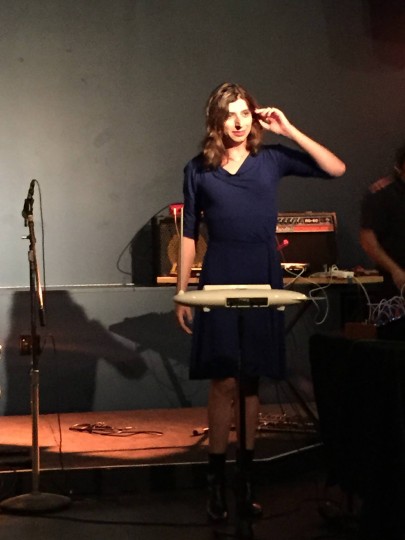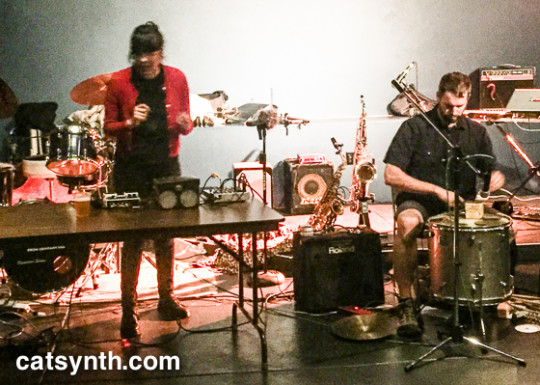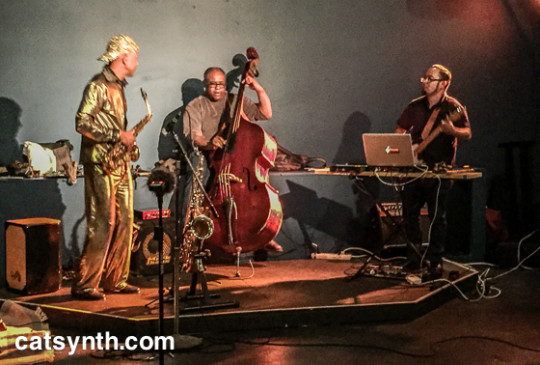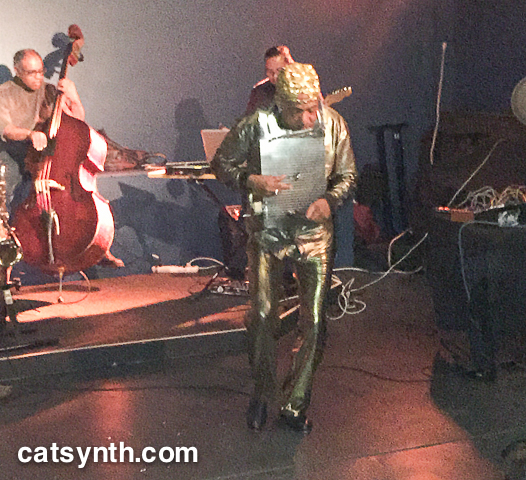The acclaimed French band Magma recently toured the United States for the first time in quite a long time. And we at CatSynth were in attendance when the played at Slims in San Francisco about a month ago.

For those not familiar with Magma, it was founded in France in 1969 by drummer Christian Vander. Musically, the band combines some of the best aspects of jazz fusion and progressive rock from the early 1970s with a unique (and somewhat apocalyptic) vision. All the the lyrics are written in Kobaïan, a constructed language invented by Vander that reflects the story from the band’s first album in which settlers fleeing Earth settle on a planet Kobaïa. The vocal arrangements feature a mixture of complex solo vocals and rich choral sections, all the while backed by Vander’s drumming and intricate rhythm from the full band.

The overall energy level was intense to say the least, but the thing I noticed most was how tight they were at all times throughout the performance. This is especially key for the fusion aspects of their music, and something that I found quite inspiring. Take some of the more fast-paced and intricate examples from Herbie Hancock’s early 1970s bands, and layer the vocals on top with punctuated rock hits. Although these elements can be found in other bands of the era, there is something distinct about their sound that made it immediately recognizable upon entry to the venue (we were slightly late and they had already started the first song). It is also interesting to note that the music has a very optimistic quality (and a bit of exuberance) that belies the rather dark theme of the lyrics and concept for the band.

Magma played to a packed house that evening. Slims is not a large venue, but it’s not the smallest either. There were definitely a lot of long time fans who clearly recognized the songs, but I’m sure some new listeners discovered them and hopefully went away wanting to hear more of them. For the overall experience and the musical inspiration, I am quite happy to have been in attendance.
























